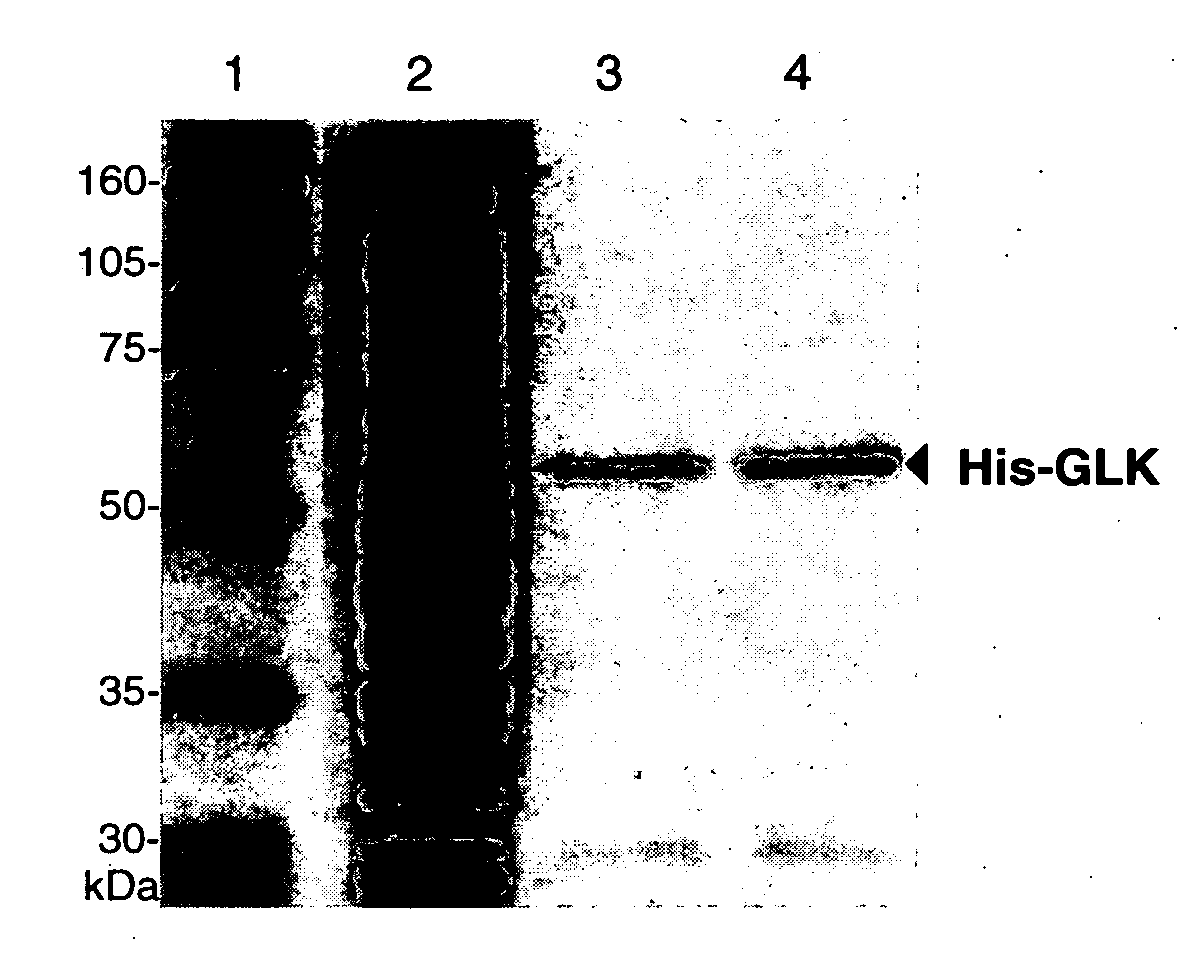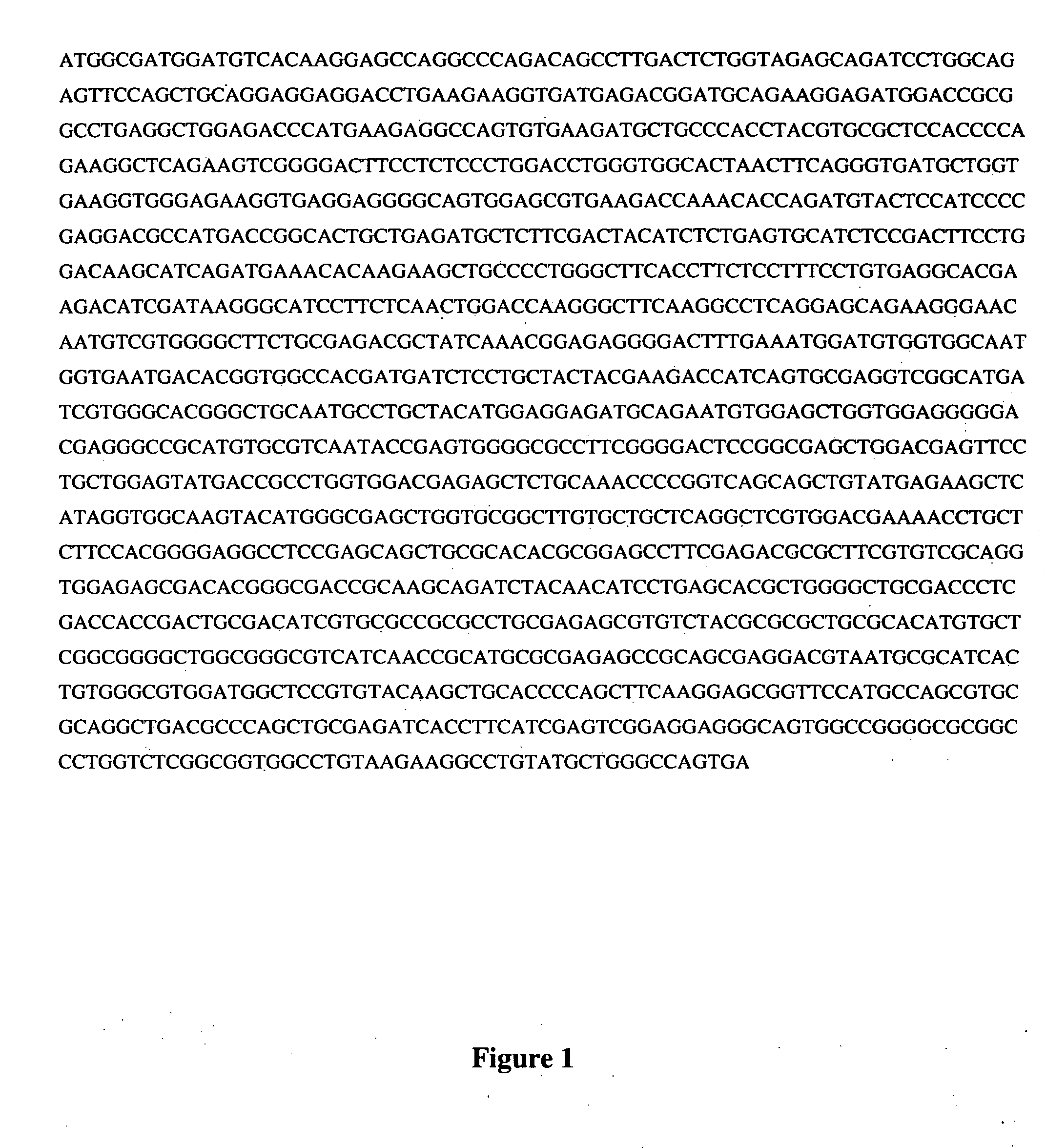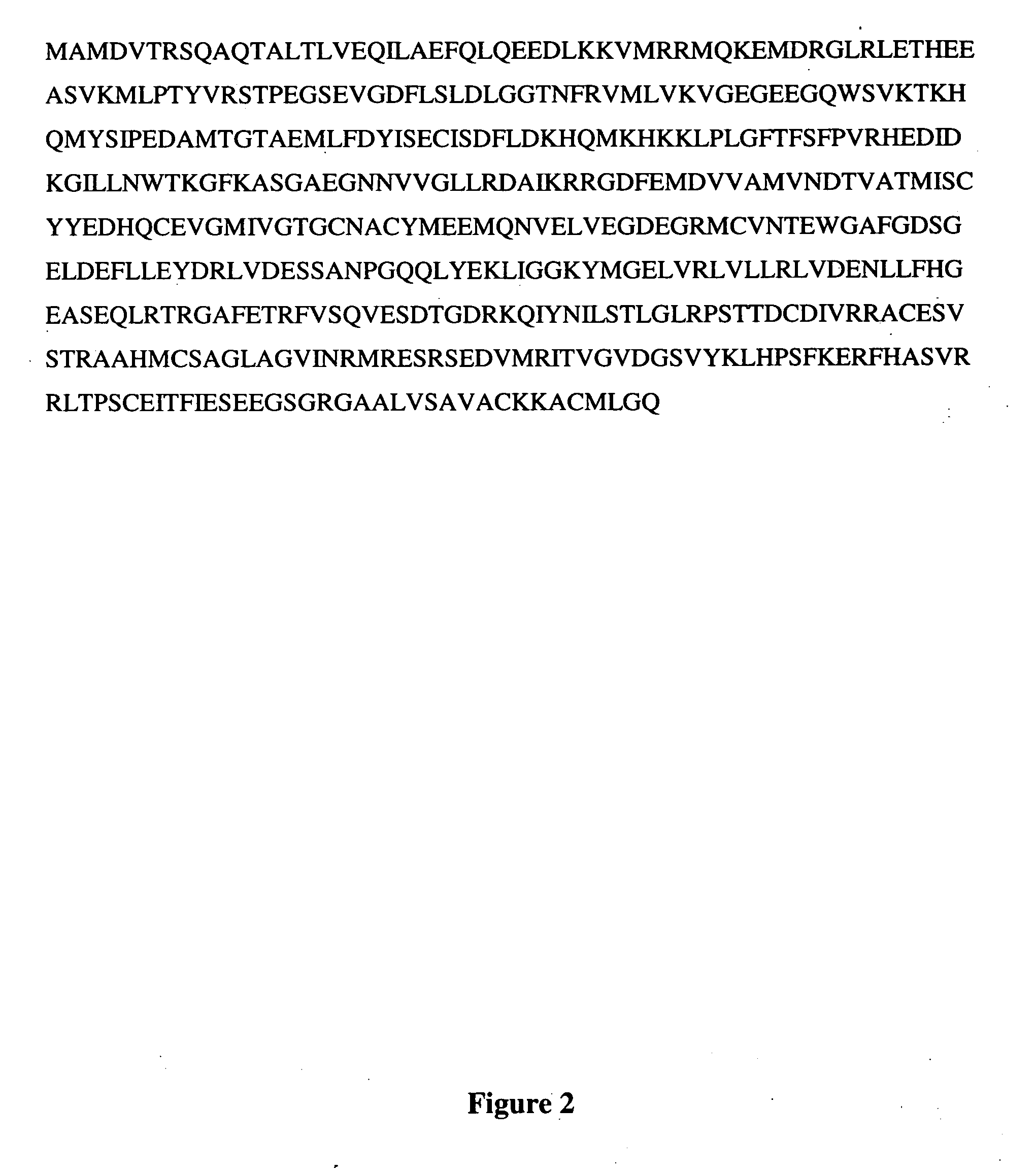Glucose sensor and uses thereof
- Summary
- Abstract
- Description
- Claims
- Application Information
AI Technical Summary
Benefits of technology
Problems solved by technology
Method used
Image
Examples
example 1
Cloning Human Glucokinase
[0130] The human liver glucokinase was cloned from the Hep 3B liver cell line. Following isolation of total mRNA from the cell line using standard techniques, RT-PCR was employed to generate sufficient glucokinase cDNA. Expand reverse transcriptase, a genetically engineered version of MoMuLV-RT that has negative RNase H activity, and an Oligo (dT)15 primer were used for the reverse transcription step. Pwo DNA Polymerase was used for the PCR step. PCR was performed in three separate reactions. The first reaction amplified a 5′ portion of the glucokinase cDNA, the second reaction amplified a 3′ portion of the glucokinase cDNA and the third reaction amplified the complete glucokinase sequence from the combined products of the first and second reactions. Primers were used that incorporated convenient restriction enzyme sites to facilitate cloning into appropriate vectors. Primers used to amplify the glucokinase for cloning into plasmid pcDNA3 (digested with Bam...
example 2
Site-Directed Mutagenesis of the Cloned Human Glucokinase
[0134] In vitro site-directed mutagenesis of the glucokinase was achieved by PCR-based techniques to create mutations at position 336 (Ser->Val; Ser->Leu and Ser->Ile) and at position 205 (Asp->Ala). The PCR reactions employed complementary primers containing mutagenic sequences, and a set of upstream and downstream primers. The sequences of the mutagenic primers were as follows (nucleotides that are different from those that occur in the wild type sequence are underlined):
Ser336ValPrimer A5′-TCGTGGTCCAGGTGGAGAGCG-3′[SEQ ID NO:9]Primer B5′-CGCTCTCCACCTGGACCACGA-3′[SEQ ID NO:10]Ser336LeuPrimer A5′-TCGTGCTGCAGGTGGAGAGCG-3′[SEQ ID NO:11]Primer B5′-CGCTCTCCACCTGCAGCACGA-3′[SEQ ID NO:12]Ser336IlePrimer A5′-TCGTGATTCAGGTGGAGAGCG-3′[SEQ ID NO:13]Primer B5′-CGCTCTCCACCTGAATCACGA-3′[SEQ ID NO:14]Asp205AlaPrimer A5′-GGTGAATGCAACGGTGGCCACG-3′[SEQ ID NO:15]Primer B5′-CGTGGCCACCGTTGCATTCACCC-3′[SEQ ID NO:16]Primer GLK-35′-CTGAATTCACTGGC...
example 3
Generation of Wild-Type and Mutant Glucokinase Vectors
[0140] The Ser336 and Asp205 mutant glucokinases produced by the above PCR reactions were first cloned into pcDNA3 (as indicated above). Wild-type glucokinase and the mutant glucokinases were each subsequently subcloned into the pGEX-KG and pET-15b expression vectors using Xhol and BamHI restriction enzymes (blunt end) for the wild-type and Sac II and BsrGI for the mutants. The pGEX-KG and pEt-15b vectors were used in order to express wild-type and mutant glucokinases containing GST and polyhistidine (His) affinity tags, respectively.
[0141] The following plasmids were generated in this manner. All plasmids have been sequenced to confirm the presence of the appropriate mutant sequence and the absence of any abnormalities.
TABLE 1List of PlasmidsPlasmidClone #GlucokinasepGEX-KG20Wild-type23Ser336Val32Ser336Leu43Ser336Ile53Asp205AlapCDNA320Wild-type7Ser336Val15Ser336Leu25Ser336Ile33Asp205AlapET-15b14Wild-type1Ser336Val9Ser336Leu1...
PUM
| Property | Measurement | Unit |
|---|---|---|
| Catalytic activity | aaaaa | aaaaa |
| Affinity | aaaaa | aaaaa |
Abstract
Description
Claims
Application Information
 Login to View More
Login to View More - R&D
- Intellectual Property
- Life Sciences
- Materials
- Tech Scout
- Unparalleled Data Quality
- Higher Quality Content
- 60% Fewer Hallucinations
Browse by: Latest US Patents, China's latest patents, Technical Efficacy Thesaurus, Application Domain, Technology Topic, Popular Technical Reports.
© 2025 PatSnap. All rights reserved.Legal|Privacy policy|Modern Slavery Act Transparency Statement|Sitemap|About US| Contact US: help@patsnap.com



